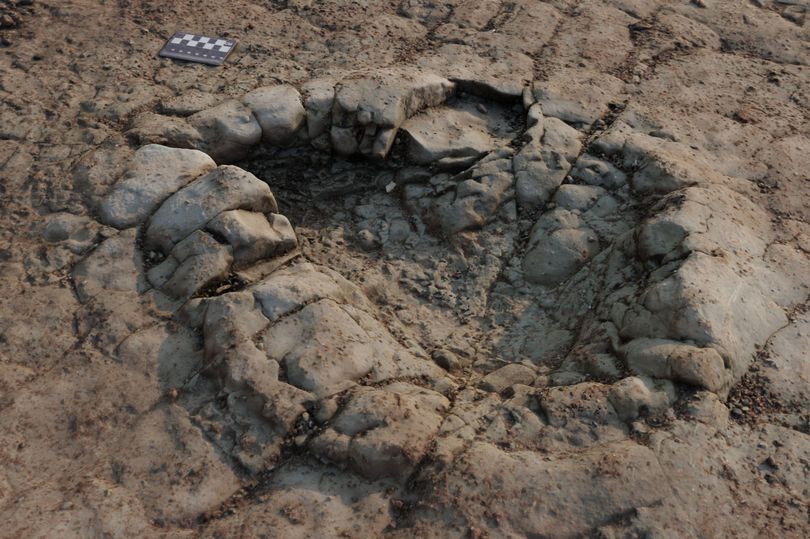Rare 200-million-year-old dinosaur footprints discovered on beach in Wales, scientists believe
Dinosaur footprints found on a Welsh beach could have been made more than 200 million years ago, experts believe. Palaeontologists at the Natural History Museum believe the footprints – known as a trackway – date back to the Triassic period and were most likely left by an early relative of the famous Diplodocus.

The footprints were discovered on a beach in Penarth in April last year by youth worker Kerry Rees, who was taking her daily lockdown stroll having recently moved to the area.
Kerry, from Ferndale in the Rhondda, was aware of the area’s history of dinosaur discoveries – with a fossilised skeleton of a distant cousin of the fearsome Tyrannosaurus Rex found on the same stretch of coastline back in 2014 – and sent pictures of the footprints to the Natural History Museum for experts to investigate.
Museum palaeontologists Dr Susannah Maidment and Professor Paul Barrett were initially sceptical of the report – but now believe that the footprints are from the late Triassic era.
“We get a lot of enquiries from members of the public for things that could be trackways but many are geological features that can easily be mistaken for them,” said Dr Maidment.
“However, from the photographs, we thought they were a fairly good contender for something that could be tracked and that it would be worth taking a look.”

After visiting the site to examine the discovery, Prof. Barrett said: “We believed the impressions we saw at Penarth were consistently spaced to suggest an animal walking. We also saw displacement rims where mud had been pushed up.
“These structures are characteristic of active movement through the soft ground.”
Researchers now think that the impressions are an example of Eosauropus, which is a name not of a dinosaur, but a type of track thought to have been made by a very early sauropod or near sauropod-relative – the group of dinosaurs that later included the Diplodocus.
“We know early sauropods were living in Britain at the time, as bones of Camelotia, a very early sauropod, have been found in Somerset in rocks dated to the same period,” said Dr Maidment. “We don’t know if this species was the trackmaker, but it is another clue which suggests something like it could have made these tracks.”

Dinosaur trackways can provide information about how herds moved, as well as the way an animal may have walked – but there is not much existing evidence akin to the trail of footprints discovered in Penarth.
“These types of tracks are not particularly common worldwide, so we believe this is an interesting addition to our knowledge of Triassic life in the UK,” concluded Prof. Barett.
“The record of Triassic dinosaurs in this country is fairly small, so anything we can find from the period adds to our picture of what was going on at that time.”

The footprints are not the first to be discovered in Wales in 2021, with a four-year-old girl stunning palaeontologists finding an “internationally important” print on a trip to the supermarket.
Lily Wilder was walking along the coast between Barry and Sully with her father Richard when she spotted what experts have called “the finest impression of a 215 million-year-old dinosaur print found in Britain in a decade”.
